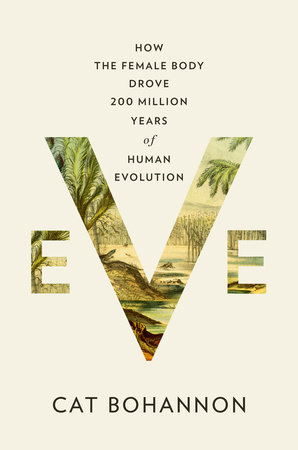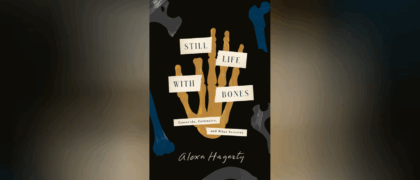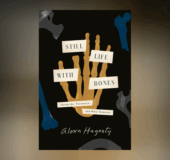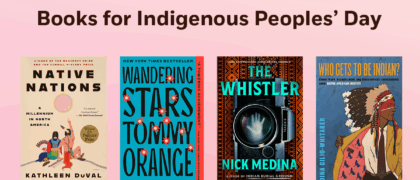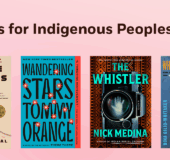In this myth-busting, eye-opening landmark account of how humans evolved, Cat Bohannon offers a paradigm shift in our thinking about what the female body is, how it came to be, and how this evolution still shapes all our lives today.
Chapter 1
Milk
No sooner had the notion of the Flood subsided,
Than a hare paused amid the clover and trembling bellflowers and
said its prayer to the rainbow through the spider’s web.. . . . . . . . . . . . . . . . . . . . . . . . . . . . . . . . . . . . . . . . . . . . . . . . . . .
Blood flowed in Bluebeard’s house—in the slaughterhouses—in the
circuses, where God’s seal made the windows blanch. Blood and milk
flowed together.
—Arthur Rimbaud, “After the Flood”Got Milk?
—advertising campaign for the California Milk Processor Board, 1993There in the soft grass, in the wet crush of evening, she was waiting: furred body shirred with drops of rain, no bigger than a human thumb.
We call her Morgie. Little hunter. One of the first Eves.
She waited at the mouth of her burrow because the sky was still pale—streaky threads of photons refracting through clouds, the deepening blue beyond. She waited because her cells told her to, all the little clocks in her clockwork, and her eyes, and her whiskers twitching in the air, and the temperature of the dirt under her footpads. She waited because there were monsters in the world, and they waited for her, too.
When the night was good and dark, Morgie risked it, skittering along the ground, searching for her prey—insects, some nearly as big as she was. She heard them before she saw them: the high-pitched hum of their wings, the wheezy tapping of their legs. Quick as that, her skinny muzzle snapped. She loved the sweet crunch of its chitinous body, loved the little dribble of fluid down her chin. She licked it off and resumed the hunt. Never safe to stop. Jaws everywhere. Claws and teeth. The thing that looked like a tree could be a leg; the wind in the ferns could be hot breath. So, she ran, and hunted, and ran, and hid, the wet air heavy as a fist. She flitted over the feet of dinosaurs like a grasshopper hopping an elephant’s toe. She felt their low bellows not as a sound so much as an earthquake.
This was life every night for Morganucodon: she who lived under giants.
When she was tired, she returned to her waiting place, fleeing the gray dawn. She crawled down her tunnel like a lizard, belly dragging over the familiar earth, paws pulling her forward into the close dark of home. The burrow was warm with the soft, radiating heat of her pups, all piled together. Their breath stank of old milk. Scraps of their leathery eggs mildewed gently in the dirt, along with urine and shit and dried spit, the smells mingling in the damp hole she’d dug for her family. A place safe from the monsters that thundered above. Safe enough.
Exhausted, she settled in. Her pups woke, blind and chirping, and swam across one another toward her belly, where beads of milk sweated out of her skin. Each pup jockeyed for the best spot. They slurped her wet fur, faces soon coated in milk. She stretched out on her side, whiskers finding the one closest to her head. Lazily she rolled him over on his back, nuzzling his unrolled ears, his thin eyelids, still closed. She dragged her raspy tongue down his belly to help him defecate, which he couldn’t yet do on his own.
The milk and the crap and the egg scraps in that dark little burrow—these are the origins of breasts. Morgie is the real Madonna. Creatures like her nursed their young in a dangerous world, not only to feed them, but also to keep them safe.
To put it in the simplest terms, women have breasts because we make milk. Like all mammals, we nurse our young with a cloyingly sweet, watery goo that we secrete from specialized glands in our torso. Why human breasts are high on our chests, rather than near our pelvis, why we have only two of them instead of six or eight, and why they’re surrounded, to varying degree, by fatty tissue that some people find sexually appealing are all questions we’ll get to. But at the heart of things, human beings have breasts because we make milk.
And as far as the latest scientific research can determine, we make milk because we used to lay eggs and, weirdly, because we have a long-standing love affair with millions of bacteria. Both can be traced back to Morgie.
Which Came First, the Chicken or the Egg . . .
Jurassic beasts tramped above Morgie’s burrow every day. Meat eaters as big as lorries ran around like ostriches on steroids. Some, in fact, looked like ostriches on steroids. Loch Ness–style plesiosaurs lived in the seas. With all the big niches in the ecosystem taken, most of our early Eves evolved underfoot, which is hardly the place you wanted to be 200 million years ago. Even the earth was dangerous: the supercontinent, Pangaea, was starting to break up. Tectonic shifts tore Morgie’s world apart. Water rushed in to fill the widening gaps, birthing new oceans with the hiss of lava hitting water.
Still, Morgie was an incredibly successful species. Her fossils have been found everywhere from South Wales to South China. Where there could be a Morgie, it seems, there was. She was adaptable. Resourceful. And she had a lot of kids. The geneticist J. B. S. Haldane liked to say that God had an inordinate fondness for beetles, for he made so many of them; eating them was a successful strategy for insectivores like Morgie. For God so loved the beetles, and the furry, warm, heart-fluttering Eves who ate them.
But it wasn’t just the surfeit of beetles that made Morgie so successful. Unlike the Eves who came before her, Morgie nursed her young.
Once they are born, newborn animals face four essential dangers: desiccation, predation, starvation, and disease. They can die of thirst. Something can eat them. They can starve to death. And if they manage to dodge all of those, they can still die from bacteria or parasites overwhelming their immune systems. Every mother in the animal world has evolved strategies to try to protect her offspring, but Morgie managed to combat all four by dousing her kids in stuff made of her own body.
When we talk about breast milk, we usually describe it as a baby’s first food. The last thing you want to do is underfeed a baby, because a newborn needs fuel to build new fat and blood and bone and tissue. As a result, we usually assume newborns cry for milk because they’re hungry, but that is and isn’t true. The most important thing infants need after they are born is water.
All living creatures, mammal or not, are mostly made of water. While the adult human body is 65 percent water, newborns are 75 percent. Most animals are essentially lumpy donuts filled with ocean. If you wanted to describe life on Earth in the simplest terms, you could say we’re energetic bags of highly regulated water.
We use that water to transport molecules between cells, between organs, to splice molecules and build new ones, to fold proteins, to cushion our various lumps, to move nutrients and waste in the right directions. Our very DNA maintains its shape surrounded by carefully ordered molecules of water. An adult human can go without food for up to a month, but without water we die in three to four days. Any biologist will tell you that the story of life is really the story of water. Our earthly cells evolved in shallow oceans, and they never got over it.
So newborn Earth animals need water as soon as possible. Fish drink constantly from the second they hatch. On land, slaking a newborn’s thirst is trickier. Some newborn reptiles are small enough that they can drink water droplets and absorb mist through their skin. Some seek out puddles and streams. Others, like newborn sea turtles, head straight for large bodies of water. But mammals seek the ocean in their mother’s abdomen; human breast milk is almost 90 percent water.
Over time, ancient land mammals like Morgie evolved to slake their hatchlings’ thirst with milk. There are a number of advantages to this adaptation. For example, the newborns don’t have to move: the water comes to them. Pups of burrowing animals can stay in the safety of a small burrow a lot longer than creatures that need to get to water. Also, milk isn’t just water but a balance of water and minerals and other useful stuff. Too much straight water all at once can be dangerous to very young mammals, and even grown human beings. There is such a thing as water poisoning, which causes all sorts of nasty side effects: Brain swelling. Delirium. Eventually, death. Our babies shouldn’t even be given water until they’re six months old. If they’re thirsty, they should just drink more milk or formula.
There were other advantages in replacing water with mother’s milk. Water is an ideal medium for transmitting disease. That’s why you’re supposed to cover your mouth when you sneeze: tiny droplets of saliva and mucus hurl away from your mouth and nose at more than thirty-five miles an hour, each drop full of viruses and bacteria. That’s why people started wearing masks in public in 2020: most airborne diseases actually “fly” from host to host in tiny droplets of fluid that have aerosolized. Either you breathe in a tiny droplet or a droplet lands on something you touch that makes its way to your face, where the moistness of your mouth, nose, and eye surfaces helps it replicate. Larger bodies of water are almost always host to millions upon millions of bacteria, some of which can be dangerous pathogens. Thus, controlling exposure to water and finding ways to ensure that drinking water is clean are two of the better strategies for maintaining the health of any animal.
Think of Morgie’s body as the Jurassic world’s best water filter. Tiny, fragile newborns are especially susceptible to pathogens, in part because of their small size and in part because their newly independent immune systems are still developing. Morgie’s milk might have contained whatever pathogens she happened to be carrying, but it wouldn’t have introduced anything new to her pups. Her immune system could fight the good fight, until her pups were old enough to fight for themselves.
Scientists think milk evolved to solve both the desiccation and the immunological problem in one go. But how it started—how the very first droplets of milk actually formed—that’s where the story takes an unexpected turn.
Like all the early mammaliaforms, Morgie laid eggs. And like many reptiles’ today, hers were soft and leathery. When you crack a chicken’s egg into a pan, you’re actually tapping through a structure evolved by dinosaurs: a hard shell that prevents the liquid inside the egg from evaporating. The eggs of most reptiles and insects, including the haphazard lineage that led to early mammals, were soft. There are a number of advantages to that strategy. For example, hard eggshells are primarily made of calcium. Like anything a body tries to build when making babies, all that calcium has to come from somewhere. Morgie was about the size of a modern field mouse. If she had tried to lay a chicken-style egg, it would have leached the calcium out of her little bones and teeth. Even now, animals that make hard-shelled eggs are known to seek out calcium-rich diets before reproducing. (Chickens in industrial egg-laying farms often suffer from osteoporosis, their fragile leg bones breaking under the weight of their own bodies.)
But small leathery eggs, like Morgie’s, can dry out before the pups are ready to hatch. So Morgie didn’t just need to keep her clutch warm; she needed to keep it wet.
There are a few different ways to do this. Modern sea turtles, for example, find a nice patch of damp sand, above the tide line, and bury their soft eggs in a shallow pit, coating each one in a thick, clear mucus they secrete during the birthing process. If you’re a more attentive sort of mother, you might still use the mucus trick, but you’ll also hang around and periodically lick the eggs or secrete some more goo onto them. That’s what the duck-billed platypus does. One of the last living mammals that still lays eggs, the platypus first digs a wet den, then lines it with soggy vegetable matter. Crawling into the center of that damp pit, she lays her clutch directly on her body and folds her tail over them. She waits there, curled around her eggs, until they hatch. Platypus eggs also have an extra mucoid layer that persists until birth and is especially dense in antimicrobial material.
Morgie needed to keep her eggs moist, but she also needed to keep them from becoming festering breeding grounds for waterborne bacteria and fungus. Most scientists assume her egg mucus contained a host of antifungal and antibacterial material as the sea turtle and platypus mothers’ mucus still does.
When today’s leather-egged offspring are ready to hatch, they use a specially evolved tool (usually a sharp “egg tooth” that later falls out) to puncture the shell. Then they also lick up some of the egg-coating goo. Their first meal, in fact, is from the wet side of the eggshell. In all likelihood, this was the first mother’s milk: an egg-moistening mucus that Morgie’s grandmother secreted out of specialized glands near her pelvis. When her pups hatched, some of them licked up a bit of this extra stuff, which gave these offspring a serious evolutionary boost. By the time Morgie came along, these glands had evolved to secrete a goo containing more water, sugars, and lipids. Eventually they became “mammary patches” with specialized bits of fur over them that helped channel the gunk into the pups’ eager mouths. Even today, newborn duck-billed platypuses lick milk from sweaty milk patches on their mother’s stomach; she doesn’t have nipples.
Copyright © 2023 by Cat Bohannon. All rights reserved. No part of this excerpt may be reproduced or reprinted without permission in writing from the publisher.
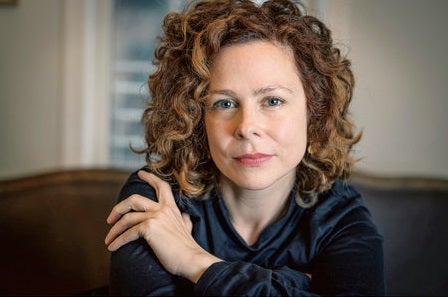
© Stefano Giovannini
CAT BOHANNON is a researcher and author with a Ph.D. from Columbia University in the evolution of narrative and cognition. Her essays and poems have appeared in Scientific American, Mind, Science Magazine, The Best American Nonrequired Reading, The Georgia Review, The Story Collider, and Poets Against the War. She lives with her family in Seattle.


